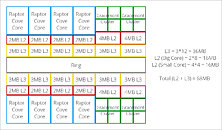
Apple M2 Posts Single-Thread CPU-Z Bench Score Comparable to Intel Alder Lake
Apple's M-series chips frighten Intel, AMD, and Microsoft like nothing else can, as they have the potential to power MacBooks to grab a sizable share of the notebook market share. This is based squarely on the phenomenal performance/Watt on offer with Apple's chips. A user installed Windows 11 Arm on a virtual machine running on an M2-powered MacBook, opened up CPU-Z (which of course doesn't detect the chip since it's on a VM). They then ran a CPU-Z Bench session for a surprising result—a single-threaded score of 749.5 points, with a multithreaded score of 3822.3 points.
The single-thread score in particular is comparable to Intel's 12th Gen Core "Alder Lake" chips (their "Golden Cove" P-cores); maybe not on the fastest Core i9-12900K, but of the mid-range Core i5 chips, such as the i5-12600. It's able to do this at a fraction of the power and heat output. It is on the backs of this kind of IPC that Apple is building bigger chips such as the M3 Pro and M3 Max, which are able to provide HEDT or workstation-class performance, again, at a fraction of the power.
The single-thread score in particular is comparable to Intel's 12th Gen Core "Alder Lake" chips (their "Golden Cove" P-cores); maybe not on the fastest Core i9-12900K, but of the mid-range Core i5 chips, such as the i5-12600. It's able to do this at a fraction of the power and heat output. It is on the backs of this kind of IPC that Apple is building bigger chips such as the M3 Pro and M3 Max, which are able to provide HEDT or workstation-class performance, again, at a fraction of the power.
































































